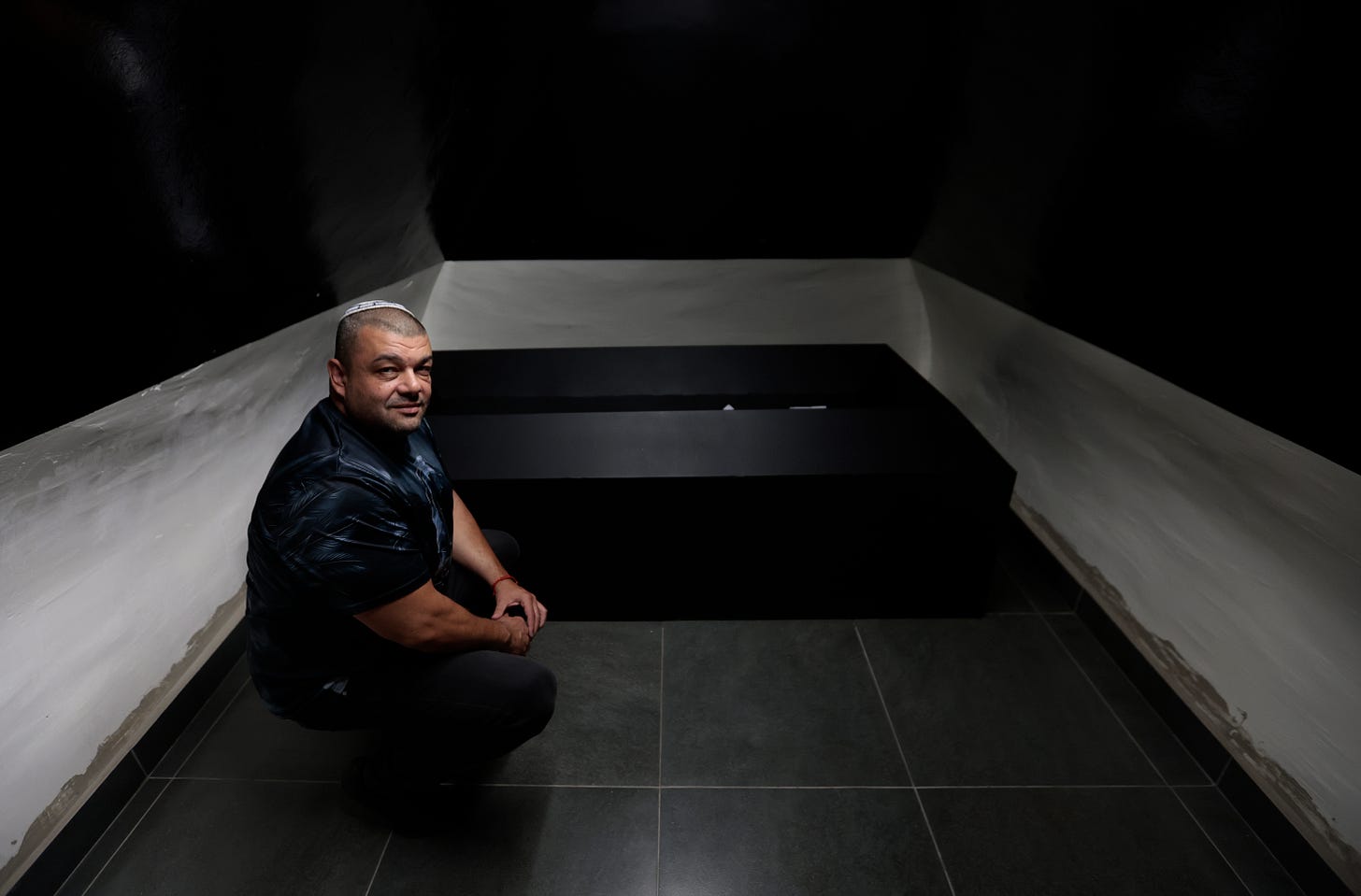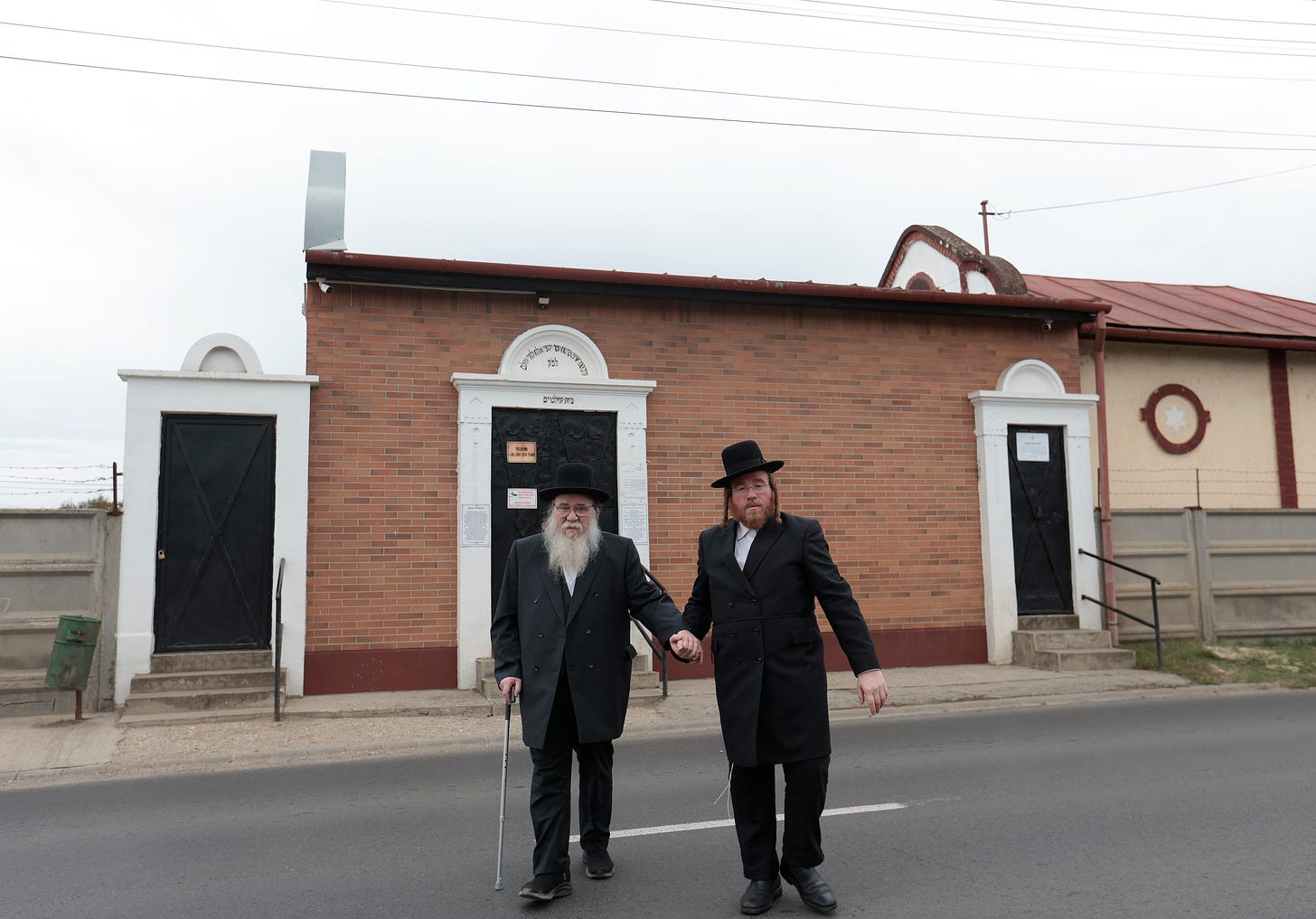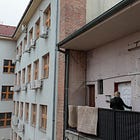The Keeper of the Tomb
Gabor Blajer’s family has kept watch over the final resting place of a mystical spiritual leader for over two centuries. Things are about to come full circle.
There’s a legend* about Rabbi Yitzchak Isaac Taub of Kaliv (1751-1821), known as the Kaliver Rebbe and head of the Kaliv hasidic dynasty, who is credited with spreading hasidism in Hungary.
The day before a major holiday, the Rebbe — called the Tzadik (holy man) by his followers — would disappear for several hours. No one knew where he went.
Yaakov Fisch, the lay leader of the Jewish community in Kaliv (the yiddish name for Nagykálló), was intent on solving the mystery. So the day before Sukkot, he hid in the Rebbe’s wagon.
A while into the journey, Fisch revealed himself to the Rebbe, who asked him to stay in the wagon for the duration and not to ask any questions.
When they arrived in an unfamiliar city, the Rebbe got out of his wagon and walked towards a mikvah (it’s customary for men to immerse themselves before a holiday.) Curious, Fisch got out of the wagon, too, and walked around. He asked someone what city he was in.
“Tzfat” (Safed in current day Israel), one of the strangers replied. “Where do you think you are?”
“Tzfat? Are you crazy. I just came from Kaliv. How could I get here in a wagon so quickly.”
“Kaliv? Now, who is crazy.”
The conversation went back and forth for a while. By the time Fisch returned to the mikveh, he spotted the Rebbe’s wagon rolling away in the distance. Realizing he was stuck in this strange place, Fisch found housing with one of the locals for the holidays.
After listening to them speak and watching their traditions, Fisch realized he truly was in Tzfat. He believed that the Tzadik must have used a special kabbalistic prayer to expedite his journey, so that he could dip in the same mikveh as the holy Kabbalist, Rabbi Yitzchak Luria.
Back home in Kaliv, Fisch’s family began to worry when he never returned. They went to ask the Rebbe for guidance. He assured them that Yaakov would return home in exactly six months, on the eve of Passover.
Sure enough, the Rebbe returned to Tzfat six months later, on the day before Passover, to dip in the mikveh. He brought Fisch home, making him promise never to reveal the secret of the journey in the Rebbe’s lifetime.
Disappearance and return are a central theme for Jews in Hungary and no one has had a closer view of this phenomenon than Gábor Blajer and his family.
Blajer’s family has lived in Nagykálló since the 1500s, when Sephardic Jews migrated to the region after fleeing the Spanish Inquisition. (Signs of the Sephardic influence are particularly pronounced in the Jewish graveyard, where tombstones lay flat on the ground.)
Blajer’s great, great grandfather was the Rebbe’s shammos (Jewish version of a sexton), tasked with running the synagogue, as well as day-to-day operations and the graveyard. After he died he tasked Blajer’s ancestor with the responsibility of ensuring his “peaceful rest.”
That responsibility has been carried on from parent to child for over 200 years. Gabor’s mother, Judit, was the last Jewish person born in the town, and it was her dying wish (she died in 2021) that Jewish life return to Nagykálló. Her son Gabor has made that his personal mission.
Gabor has breathed life into the town known to many only for death. The Rebbe’s disciples visit in increasingly greater numbers, making the pilgrimage not to Tzfat but Nagykálló, a village the Rebbe described as “sacred.” And Gábor Blajer welcomes each and every one of them.
Jews have lived in Nagykálló, which is about an hour’s drive from my grandmother’s village of Beregdaroc, off-and-on since the middle ages, depending on the political climate. Before World War II, about 1000 Jews lived here, a little less than 10 percent of the town. Today, there are five.
The history of Jews in Nagykálló comes alive when you speak to Blajer. According to stories passed down in his family, the Tzadik would sit down once a week with other civic and religious leaders to discuss the affairs of the town. Jews and non-Jews alike would seek out his guidance. By the late 1800s, the village began to include more progressive Jews, but the Rebbe still held a strong role.
Hassidic Jews from Williamsburg, Brooklyn visit the Tzaddik’s grave. Photos by Laszlo Balogh
It’s not just Nagykálló that’s become a beacon for Jewish tourists. In Bodrogkeresztur, about 60 km away, this tiny town has been transformed. It’s the home of the “Miracle” Rabbi Yeshaya Steiner, who founded the Kerestirer Hasidic dynasty and died in 1921.
Walking through the village is like going back in time. Dozens of homes have been purchased to support the thousands who make the pilgrimage to the site. Up to 50,000 Jews travelled to the village of 1000 people to commemorate the Rebbe’s birthday last April. This year will mark the centennial, and the number is expected to be much higher.
The most prominent site on the famous Rabbi touring circuit is in Uman, Ukraine at the birthplace of Rabbi Nachman of Breslov. Rabbi Nachman of Breslov was the founder of the Breslov Hasidic sect and the great-grandson of the Baal Shem Tov, who established the hasidic movement.
Tens of thousands visit Rabbi Nachman of Breslov’s grave in Uman before Rosh Hashana despite the war. The event brings more than US$20 million a year into the war-hit country but not all the locals appreciate the litter and chaos accompanying the festivities.
It’s the same in Bodrogkeresztur, where the Rebbe’s followers have purchased multiple buildings to accommodate the tens of thousands of travellers — redeveloping them as inns and mikvahs — and pushing the locals out of the housing market. Kosher food is shipped in from Vienna so on the surface, there doesn’t appear to be much benefit to the local community.
“They should go back where they came from,” one woman in Bodrogkeresztur told the Christian Science Monitor in 2020. It’s a chilling reminder for Jews in a place where history feels set on repeat. But it also provides a remarkable insight into what life was like before the Holocaust.
While writing The Synagogue at the End of the World, I’ve become less interested in death and more in the life that was. Before the war, many Jews in these town, specifically in the Tokaj wine region, were innkeepers, and wine retailers and leather-merchants. Historical research connects the spread of hasidism to wine and leather trade routes towards Polish territories. These pilgrimages are making Jewish inn-keeping fashionable again, providing an important connection to the past for not only hasidic sects, but people like me, eager to get closer to the source of my family’s origins.
I’ve now made the pilgrimage to my grandmother’s village twice. I plan to go back again. While there, I found a synagogue that was practically forgotten. It disappeared so to speak and now I want to bring it back to life.
No one can tell me there isn’t something mystical about that.
(*The story is a legend but credit is given to AscentofSafed.com for details)
Other stories in the Synagogue at the End of the World series:










Incredible. We should discuss books in progress - I have a portion of Hungarian history in my book. Also we visited some Rebbe’s tomb in nowhere Hungary in 1991 - I’ll have to rewatch the video to see who it was. My family were Tokaij merchants and still have a fascination with wines.
Finally - there was always a family rumor that we came from Spain to Hungary during the Inquisition but zero proof. I’ve been trying to track down HOW WE GOT TO Hungary generally, and more significantly without Yiddish, but haven’t hit on it yet.
Leah, I just want to pause and say how deeply this piece moved me. You’ve braided legend, lineage, grief, and grit into something that feels alive — not just as history, but as inheritance. The story of Gábor Blajer and his family's quiet devotion across centuries hit me like a sacred echo. It’s rare to feel time collapse like that — to read something and feel like you're standing beside both Fisch in Tzfat and Gábor in Nagykálló at once.